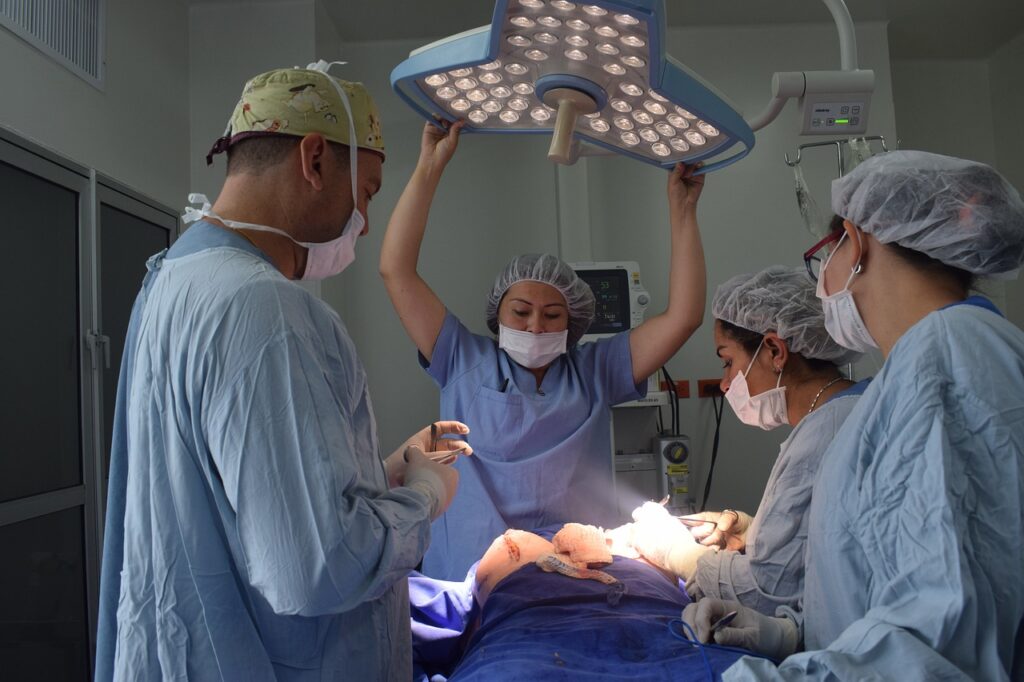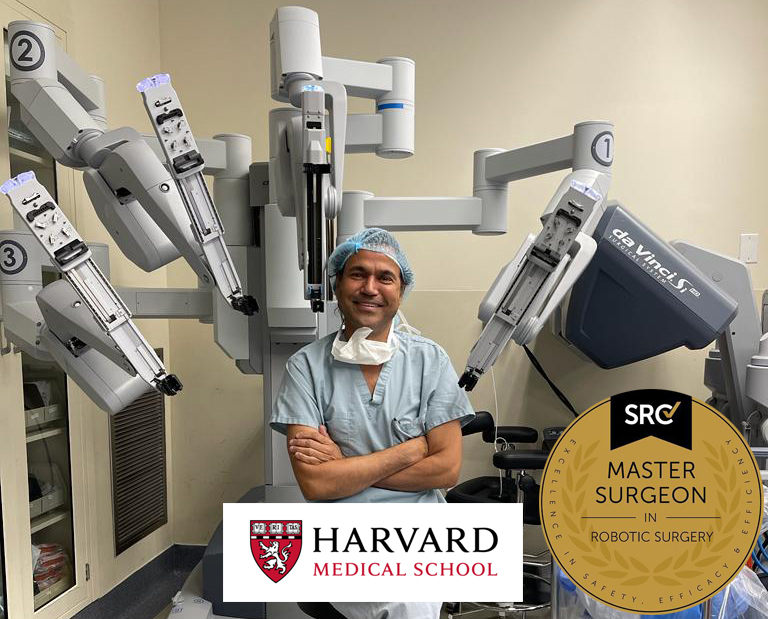切除手术与激光消融治疗子宫内膜异位症的区别
Discover the difference between excision surgery and laser ablation in the treatment of endometriosis. Learn about the contrasting approaches, benefits, and considerations of each surgical technique for managing endometriosis symptoms effectively.
Excision Surgery for Endometriosis
Excision surgery in endometriosis refers to a surgical procedure aimed at removing endometrial tissue and lesions that have grown outside the uterus. It is considered the gold standard surgical approach for treating endometriosis.
During excision surgery, a skilled surgeon carefully cuts out or excises the abnormal endometrial tissue, including any deep infiltrating or deeply rooted lesions. The procedure is typically performed using minimally invasive techniques such as laparoscopy, which involves making small incisions in the abdominal area and inserting a laparoscope—a thin, lighted tube with a camera—to visualize the pelvic cavity.
The surgeon then uses specialized instruments to identify and excise the endometrial implants, preserving healthy tissue and organs as much as possible. Excision surgery aims to completely remove the endometrial lesions, providing symptom relief and potentially improving fertility outcomes for individuals with endometriosis.
Excision surgery is preferred over other surgical techniques like ablation, which involves burning or vaporizing the lesions. Excision offers a more thorough removal of endometrial tissue and can be beneficial in cases where deep infiltrating lesions or extensive disease is present.
Benefits of Excision Surgery
The benefits of excision surgery over laser ablation in the treatment of endometriosis are significant. Here are some key advantages of excision surgery:
Thorough removal of lesions: Excision surgery involves physically cutting out the endometriotic lesions, ensuring a more complete removal compared to laser ablation, where the lesions are burned or vaporized. Excision surgery allows for precise removal of deep infiltrating or deeply rooted lesions, reducing the likelihood of disease recurrence.
Improved symptom relief: Excision surgery has been shown to provide better and longer-lasting relief from symptoms associated with endometriosis, such as pelvic pain, dysmenorrhea (painful periods), and dyspareunia (pain during intercourse). By completely excising the lesions, excision surgery addresses the underlying cause of the symptoms.
Preservation of healthy tissue: Unlike laser ablation, which involves heating and potentially damaging surrounding healthy tissue, excision surgery aims to preserve as much healthy tissue and organs as possible. This is particularly important for preserving fertility-related structures like the ovaries and fallopian tubes.
Enhanced fertility outcomes: Excision surgery has demonstrated positive effects on fertility outcomes for individuals with endometriosis. By removing endometriotic implants, excision surgery can improve the chances of natural conception and increase the success rates of fertility treatments.
Accurate diagnosis and pathology evaluation: Excision surgery allows for a more accurate diagnosis of endometriosis through tissue biopsy and enables detailed pathological evaluation. This can provide valuable insights into the extent of the disease and help guide further treatment decisions.
It is important to consult with a knowledgeable healthcare professional who specializes in endometriosis to determine the most appropriate surgical approach based on individual circumstances and disease severity.
Laser Ablation for Endometriosis
Laser ablation in endometriosis is a surgical technique used to treat the condition. It involves the use of laser energy to destroy or vaporize the endometriotic lesions that have developed outside the uterus.
During the procedure, a surgeon inserts a laparoscope—a thin, lighted tube with a camera—through small incisions in the abdomen to visualize the pelvic cavity. A laser fiber is then used to apply controlled bursts of laser energy directly onto the endometriotic lesions. The laser energy heats and destroys the abnormal tissue, aiming to remove or reduce the lesions.
Laser ablation is considered a minimally invasive procedure and can be performed as a standalone surgery or in conjunction with other surgical techniques. It is typically used for superficial or shallow endometriotic lesions that are accessible and less invasive to treat.
Compared to excision surgery, laser ablation may have some limitations. It is not as effective in completely removing deep infiltrating or deeply rooted lesions, which can potentially lead to higher rates of disease recurrence. Additionally, there is a risk of thermal damage to surrounding healthy tissue during the laser ablation process.
Unlike excision surgery, laser ablation does not provide a tissue sample for precise pathological evaluation. This may limit the ability to accurately diagnose certain types of endometriosis or identify rare pathologies associated with the condition.
Benefits of Laser Ablation
Laser ablation in endometriosis treatment offers certain benefits over excision surgery. Here are some advantages of laser ablation:
Less invasive procedure: Laser ablation is a minimally invasive procedure that requires smaller incisions compared to excision surgery. This results in reduced scarring, faster recovery time, and less post-operative pain.
Suitable for superficial lesions: Laser ablation is particularly effective for treating superficial or shallow endometriotic lesions that are accessible through laparoscopic visualization. It can effectively target and destroy these lesions without the need for extensive tissue removal.
Preservation of healthy tissue: Laser ablation aims to selectively destroy the endometriotic lesions while preserving surrounding healthy tissue. This can be advantageous when the lesions are located near vital structures such as the ovaries, fallopian tubes, or bowel. Preserving healthy tissue can help maintain organ function and potentially preserve fertility.
Lower risk of complications: Laser ablation carries a lower risk of complications compared to more extensive surgical procedures like excision surgery. The procedure is associated with reduced blood loss, shorter hospital stays, and a lower likelihood of post-operative complications.
Suitable for specific cases: Laser ablation may be a suitable option for individuals with milder cases of endometriosis or when the lesions are limited in depth and extent. It can effectively manage symptoms and provide relief in these cases.
It’s important to note that the choice between laser ablation and excision surgery depends on various factors, including the location and extent of the lesions, severity of symptoms, and individual patient characteristics.
Main Difference Between Laser Ablation and Excision Surgery
The main difference between laser ablation and excision surgery lies in the approach and extent of tissue removal:
- Approach: Laser ablation uses laser energy to destroy or vaporize endometriotic lesions, while excision surgery involves physically cutting out or excising the lesions.
- Tissue removal: Laser ablation primarily targets the surface of the lesions, aiming to destroy the superficial tissue layers. Excision surgery, on the other hand, involves the complete removal of the lesions, including deeper and infiltrating tissue layers.
- Lesion eradication: Laser ablation focuses on destroying or ablating the visible lesions, while excision surgery aims to completely remove the lesions, including any deep infiltrating or deeply rooted endometriosis.
- Recurrence rates: Due to the more thorough removal of lesions, excision surgery generally has lower recurrence rates compared to laser ablation. Excision surgery aims to remove the lesions at their roots, reducing the likelihood of disease recurrence.
- Suitability: Laser ablation is often suitable for individuals with superficial or shallow lesions that are accessible through laparoscopic visualization. Excision surgery is preferred when there are deeper or infiltrating lesions that require complete removal.

- New York Gynecology Endometriosis
- Contact Info:
-
375 E. Main Street,
Suite 7, Bay Shore,
NY 11706 - (631) 533-9733
Pankaj Singhal, MD, MS, MHCM
机器人手术外科医生大师
Pankaj Singhal 博士是全球公认的子宫内膜异位症外科医生,在腹腔镜切除手术方面拥有超过 25 年的专业知识,这使他能够充满信心地应对最具挑战性的子宫内膜异位症病例。 Pankaj 医生治疗患有多种子宫内膜异位症相关疾病的患者,从卵巢子宫内膜异位症到影响肠道和其他器官的严重深部浸润性子宫内膜异位症。
Pankaj 医生优先考虑微创手术并提供全面的个人护理。此外,他还是纽约妇科和子宫内膜异位症 (NYGE) 的所有者和创始人,并一生致力于倡导、尊重和治疗患有这种鲜为人知的疾病的女性。他是全美国少数完成超过 5,718 例机器人辅助妇科手术的外科医生之一。

我们接受大多数主要保险计划
便捷的计费选项,全面覆盖。
手术通常由健康保险承保。然而,承保范围可能会有所不同,具体取决于具体的保险计划和保单。一些保险计划可能涵盖广泛的外科手术,包括选择性和必要的手术,而其他保险计划可能对某些手术有限制或排除。
在某些情况下,某些保险计划或计划可能会全额承担手术费用,使患者无需承担经济责任。
请求预约
New York Gynecology Endometriosis
"*" indicates required fields
